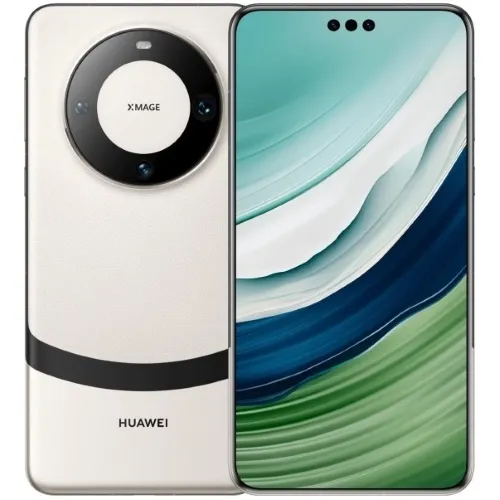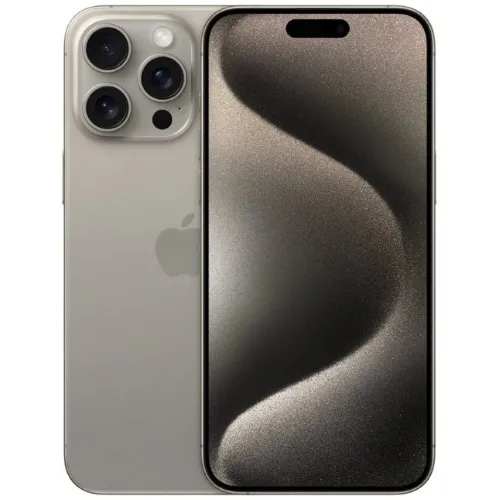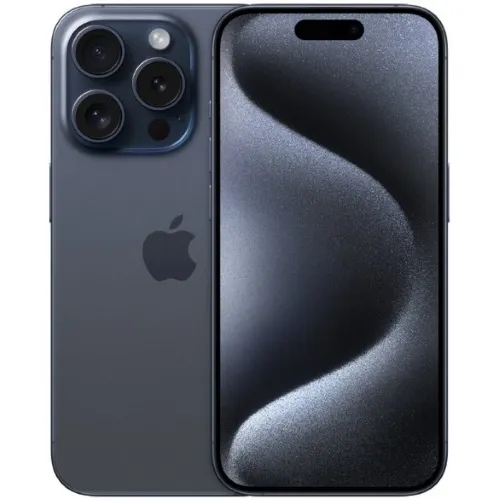10 Phones with the World's Best Cameras in 2025
With the rise of social media, cameras have become a crucial feature of smartphones, including both rear and front cameras. However, not all mobile phones come with high-quality cameras. In this article, Carisinyal will explore some of the best camera phones in the world.
Here, we present a list of the top mobile phones based on evaluations by the DxOMark website, which regularly tests the latest smartphone cameras. Below is the list of these phones, and a more detailed explanation of each phone's camera features follows the table.
1. Huawei Pura 70 Ultra

Huawei Pura 70 Ultra offers a range of impressive features. It boasts a DxOMark score of 163, highlighting its exceptional camera quality.
The retractable lens allows the camera to capture more light, enhancing image quality, especially in low-light conditions. Additionally, the telephoto camera is ideal for long-distance shooting, while the ultrawide sensor, with a 40 MP resolution and autofocus, ensures sharp and detailed wide-angle shots.
The front camera also supports autofocus and offers a wide field of view, making it perfect for selfies and video calls. Video recording is supported up to 4K to provide crisp and clear footage.
The display is bright and features an LTPO OLED screen with an adaptive refresh rate of 1-120 Hz, ensuring smooth visuals whether you're gaming or scrolling.
Powered by the Kirin 9010, the device delivers world-class performance that's perfect for gaming and other demanding tasks. It also includes a full range of sensors, emergency message capabilities, and infrared support.
The USB-C 3.1 port supports display output that makes it more versatile. Additionally, the phone comes with all-in-one superior charging features and a unique body design with super-thin bezels.
However, there are a couple of drawbacks. The rear camera does not support 8K video recording, and the device has a very heavy body weight, which may be a consideration for some users.
2. Google Pixel 9 Pro XL

Google Pixel 9 Pro XL achieved an impressive camera score of 163 in DxOMark testing. It particularly stood out for its exceptional zooming capabilities, rapid autofocus, consistent color reproduction, and stable video recording.
This smartphone employs a versatile triple-lens rear camera system. This system includes a primary lens, an ultrawide lens, and a 5x optical zoom telephoto lens to provide a range of photographic options.
On the front, the selfie camera utilizes an ultrawide lens that lets it to capture a broader field of view, ideal for group selfies or including more of the background.
Notably, all cameras on the Pixel 9 Pro XL are equipped with autofocus and can record video in resolutions up to 4K at 60 frames per second. The main camera pushes the boundaries even further, offering 8K video recording at 30 frames per second.
To ensure quick and accurate focusing, the device incorporates Multi-zone Laser AF technology, allowing it to lock onto subjects rapidly.
Powering the phone is the Google Tensor SoC, known for its robust artificial intelligence capabilities and efficient image processing. This processing power is reflected in its AnTuTu v10 benchmark score of 1.3 million.
For connectivity, the Pixel 9 Pro XL offers an all-encompassing suite of options, including Wi-Fi 7, NFC, and USB Type-C 3.2. Adding to its features, it includes a sensor capable of detecting skin temperature.
In a pioneering move for Android smartphones, it also provides SOS satellite support for emergency communication situations. Furthermore, the phone boasts high-quality stereo speakers that produce clear and detailed audio with substantial loudness.
Battery performance can allow for over 14 hours of video streaming on YouTube. For recharging, it supports 27-watt fast charging, which is advertised to replenish the battery to 70 percent in just 30 minutes.
Finally, the Google Pixel 9 Pro XL operates on Android 14 and is committed to providing 7 years of both operating system upgrades and security updates, ensuring long-term software support.
However, in terms of portrait photos taken with the front camera, the blur effect in the background can sometimes appear inconsistent.
Additionally, when recording videos while walking, the dynamic range and sharpness can occasionally become unstable. Lastly, in very dimly lit environments, the color in photos can sometimes be slightly underexposed.
3. Honor Magic6 Pro

Honor Magic6 Pro offers several impressive features. It achieved a DxOMark score of 158 and is equipped with a 50 MP main camera with Laser AF and a changeable aperture.
The 180 MP telephoto periscope supports up to 2.5X optical zoom and OIS stabilization, while the 50 MP ultrawide camera also has autofocus. The device can record 4K video at 60 FPS and 10-bit HDR video, delivering a wide dynamic range and vibrant colors.
The 50 MP front camera, enhanced with autofocus and 3D ToF, improves bokeh quality, and it can record 4K video at 30 FPS with excellent stabilization.
Powered by the Snapdragon 8 Gen 3, one of the top flagship chips in 2024, the Magic6 Pro delivers strong performance. The 6.8-inch LTPO OLED screen supports a 1-120 Hz refresh rate that ensures smooth visuals.
The phone can connect to an external monitor via its USB-C 3.2 port and includes a range of fast charging features, Wi-Fi 7 for fast internet, infrared for universal TV control, and an Emergency SOS satellite feature.
However, the dual punch holes on the screen can disrupt the display, and the device does not support 8K video recording.
4. Apple iPhone 16 Pro Max

iPhone 16 Pro Max earned a camera score of 157 on DxOMark, praised for its ability to retain video detail in low light, eliminate shutter lag, and allow customizable color tones. It features sensor-shift OIS on both the main and periscope telephoto cameras which can deliver smoother stabilization.
The ultrawide camera now boasts a 48 MP resolution, four times higher than the iPhone 15 Pro Max, significantly improving low-light performance.
All cameras, including the front-facing one, support 4K video recording at 60 fps. It also offers ProRes format recording with minimal compression, making it a preferred choice for video editors.
Powered by the Apple A18 Pro chip with 3nm fabrication and a clock speed of up to 4.04 GHz, the device ensures exceptional performance. The design is premium, featuring a distinctive zig-zag boba camera layout and a sturdy glass build with a grade 5 titanium frame.
Despite housing advanced technology, the body remains relatively slim at 8.3mm and is rated IP68 for dust and water resistance. It can withstand submersion in up to 6 meters of water for 30 minutes.
The 6.9-inch LTPO Super Retina XDR OLED display delivers sharp resolution and is protected by the latest Ceramic Shield Glass (2024 Gen).
It supports high-end features like HDR10, Dolby Vision, Always-on Display, and a peak brightness of 2000 nits. The smooth 120 Hz refresh rate enhances the viewing experience.
Stereo speakers provide loud and immersive sound quality. Connectivity includes a Gen 2 UWB chip, Emergency SOS, and Apple Pay.
Battery life has improved with a 4685 mAh capacity, offering over 22 hours of video streaming. Fast charging enables the battery to reach 50% in just 30 minutes, with 25W MagSafe wireless charging, 15W standard wireless charging, and 4.5W reverse wired charging.
However, the telephoto camera occasionally struggles with consistency, losing detail at 2x and 5x magnification. A narrow depth of field can make backgrounds appear less focused in multi-subject photos.
In challenging lighting conditions, the camera has difficulty minimizing flare and ghosting effects. Additionally, the display may sometimes dim unexpectedly when capturing photos in low-light environments.
5. Apple iPhone 16 Pro

iPhone 16 Pro scored 157 for camera performance on DxOMark, earning praise for maintaining video detail in low light, eliminating shutter lag when taking photos, and offering customizable color profiles.
Its main and periscope telephoto cameras feature sensor-shift OIS, providing smoother stabilization. The ultrawide camera now boasts a 48 MP resolution—four times higher than the iPhone 15 Pro Max—enhancing low-light performance.
All cameras, including the front-facing one, support 4K recording at 60 fps. Additionally, it offers ProRes video recording with minimal compression, making it a favorite among video editors.
Performance is powered by the Apple A18 Pro chip, built on a 3 nm process and reaching clock speeds of up to 4.04 GHz.
The design stands out with a premium look, featuring a "zig-zag boba" camera layout and a glass body reinforced with a grade-5 titanium frame. Despite its sturdy build, it remains sleek at just 8.3 mm thick. The phone is also IP68-certified, making it resistant to dust and water, capable of withstanding depths of up to 6 meters for 30 minutes.
Its 6.3-inch LTPO Super Retina XDR OLED display delivers sharp visuals, protected by next-gen Ceramic Shield Glass (2024). High-end features like HDR10, Dolby Vision, and Always-on Display enhance the viewing experience, while peak brightness reaches an impressive 2000 nits. The 120 Hz refresh rate ensures smooth, fluid motion.
Audio quality is excellent, thanks to its well-balanced stereo speakers. Connectivity and sensors are also top-notch, with support for Gen 2 UWB, Emergency SOS, and Apple Pay.
Battery life is improved, featuring a 3582 mAh capacity that lasts over 18 hours of video streaming. Charging speeds are efficient, with fast charging reaching 50% in just 30 minutes. It supports 25W MagSafe wireless charging, 15W standard wireless charging, and 4.5W reverse wired charging.
However, detail consistency is an issue with the telephoto camera, particularly at 2x and 5x zoom levels. The shallow depth of field sometimes results in an unfocused background when capturing multiple subjects in a single frame.
The camera struggles to minimize flare and ghosting in challenging lighting conditions. Additionally, the display may dim unexpectedly when taking photos in low-light environments.
6. HUAWEI Mate 60 Pro+

The HUAWEI Mate 60 Pro+ has exceptional photo quality, making it great for all kinds of conditions. It's especially good for taking pictures of friends and family, as it captures skin tones very accurately, even in challenging light.
The phone's camera maintains clarity and detail in zoomed-in photos, without any graininess. It adjusts its aperture to keep everyone in focus, even if the number of people in the shot changes.
Its telephoto camera can magnify up to 3.5x, perfect for close-up, detailed shots. The portrait mode creates a beautiful blur effect, neatly isolating the subject from the background.
The video stabilization in the HUAWEI Mate 60 Pro+ is impressive too, significantly reducing shakiness when recording on the move.
However, the camera does have some limitations. When recording videos in high-contrast or low-light settings, some details can be lost. Also, video recordings can show noticeable graininess indoors or in poorly lit areas.
According to DxOMark's tests, the HUAWEI Mate 60 Pro+ received an overall camera score of 157 points, with 160 points in photography and 148 points in videography.
7. OPPO Find X7 Ultra

OPPO Find X7 Ultra excels in camera performance, with a DxOMark score of 157 points and outstanding color reproduction. It offers great detail in medium and long-distance shots to deliver a creamy bokeh effect with clear subject isolation.
The device is equipped with four 50 MP cameras, including a main camera that features a 1-inch sensor, OIS, and Laser AF. The telephoto periscope sensor provides OIS and up to 6x optical zoom, while the ultrawide camera benefits from PDAF for more accurate focus.
Both the front and rear cameras support up to 4K video recording at 60 FPS, with the front camera also featuring PDAF and gyro EIS.
The phone supports 100-watt fast charging, reaching full charge in just 26 minutes. It also includes 50-watt wireless charging and 10-watt wireless reverse charging. Additional features include Wi-Fi 7, Bluetooth 5.4, NFC, and an infrared port, along with an Emergency SOS sensor for added safety.
However, there are some drawbacks. Close-up shots with the ultrawide and telephoto lenses may lose some detail. Dark photos can sometimes appear slightly overexposed, and the phone does not support 8K video recording.
8. HUAWEI P60 Pro

The HUAWEI P60 Pro is one of the top mobile phones with an excellent camera. It excels in extremely low light conditions, such as complete darkness, and this includes photos taken with its telephoto periscope camera.
You'll be amazed to see that nighttime photos taken with this phone can look as clear as daytime shots because the camera is that impressive. The HUAWEI P60 Pro camera also does a great job at capturing sharp and detailed images of people's faces in various lighting situations.
Whether you're taking photos or recording videos, the camera handles noise – those tiny specks often seen in pictures – very well. It keeps the details crisp and clear, even in tough lighting situations like when you're shooting against a light source.
The photos from the HUAWEI P60 Pro have a remarkable dynamic range. This means that you can see clear details around light sources, like the sky and clouds, which look very realistic, even under bright sunlight.
However, the camera isn't completely flawless. For instance, when recording videos in low light, skin tones might not look very natural. Also, in complex shooting conditions, some details might appear a bit artificial.
DxOMark gave the HUAWEI P60 Pro's camera a total score of 156 points, with 159 points for photography and 147 points for videography.
9. Apple iPhone 15 Pro Max

The iPhone 15 Pro Max mostly has the same camera features as the iPhone 14 Pro Max, but it comes with a new addition - the periscope camera.
This new feature boosts the iPhone 15 Pro Max's optical zoom capability to 5x, a step up from the 3x zoom on the iPhone 14 Pro Max. The stabilization in the telephoto camera has also been improved, going from regular OIS (Optical Image Stabilization) to sensor-shift OIS, which is more advanced.
Another exciting feature of the iPhone 15 Pro Max is its ability to record spatial 3D videos. These videos can be watched on VR (Virtual Reality) devices, offering a more immersive experience. In terms of photo and video quality, the camera of the iPhone 15 Pro Max manages to capture bright and clear images even in low-light night conditions.
The photos look even more impressive when viewed on an HDR screen, thanks to their enhanced brightness and contrast. The camera on this phone also delivers natural-looking skin tones, has reliable autofocus, and an effective stabilization feature that reduces shaking during video recording.
However, the photo details from this phone's camera can vary under different zoom levels. Also, the dynamic range in the photos doesn't quite match up to other top-of-the-line phones.
In DxOMark's testing, the Apple iPhone 15 Pro Max scored a total of 154 points. This breaks down into 153 points for photography and 158 points for video recording.
10. Apple iPhone 15 Pro

Even though the iPhone 15 Pro is a step below the iPhone 15 Pro Max in ranking, it still has impressive camera capabilities. Unlike the Pro Max, it doesn’t have a periscope camera, but rather a regular telephoto lens.
The main new feature of the iPhone 15 Pro, compared to the iPhone 14 Pro, is its ability to record 3D spatial video, a feature it shares with the Pro Max model.
The iPhone 15 Pro continues to use a 48 MP main sensor from Sony (IMX 803), the same as the iPhone 14 Pro. Any improvements in photo quality are largely due to the iPhone 15 Pro’s software enhancements.
In terms of photo and video quality, the Pro shares many strengths with the Pro Max. It has quick and precise autofocus that accurately captures the subject, effective video stabilization for smooth recording while moving, and it captures excellent detail in well-lit scenes.
Moreover, the camera takes clear night shots with fine details, although there is still some noise or graininess in low-light photos.
The iPhone 15 Pro received the same DxOMark score as the Pro Max, with a total of 154 points (153 for photography and 158 for videography). This means you can choose the less expensive Pro version and still enjoy the same high-quality photos as the Pro Max.
Ultimately, the best camera is the one you have with you. Since I use my phone more than a digital camera, I'm confident that the phones on this list are ready to capture important moments. So, which one catches your eye?
